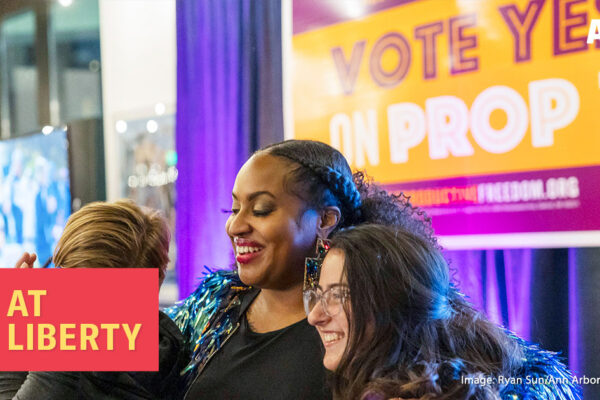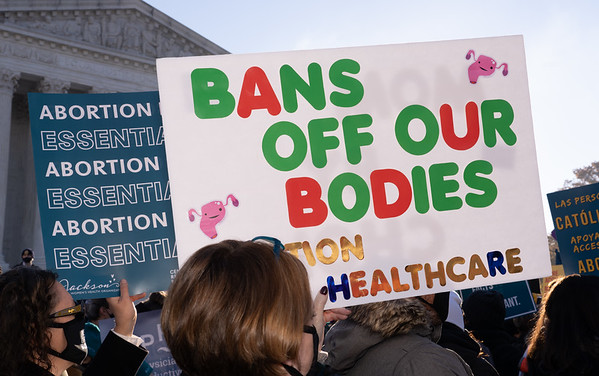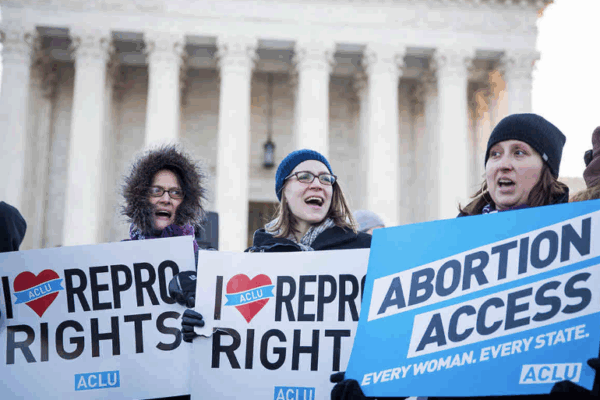Following the Supreme Court’s shameful overturning of Roe v. Wade earlier this year, voters overwhelmingly showed up and showed out to protect reproductive freedom during the midterm elections. With the holiday season fast approaching, abortion is likely to come up in conversations about the news — including among friends and family.
Here, we share a handy reference guide on this timely issue — full of the quick, crucial facts on abortion rights you’ll want to be equipped with if it comes up at your dinner table.
WHAT TO KNOW ABOUT:
The Facts
- Abortion is overwhelmingly safe.
- The right to abortion is supported by an overwhelming majority of Americans.
- Abortion is common. One in four women who are able to get pregnant will have an abortion at some point.
- Abortion is essential health care, a constitutional right, and a human right.
Abortion should be accessible to anyone who needs it. Period.
WHAT TO KNOW ABOUT:
What Forced Pregnancy Is and Isn’t
- When it comes to discussing abortion access, the focus should remain centered on the people who need, or will need, this critical care — and the direct harm forced pregnancy places on lives.
- Despite how anti-abortion politicians may frame it, forced pregnancy is not some political talking point: Forced pregnancy is taking away a person’s constitutional and human right to control their body and their future.
- Denying someone abortion care has devastating and lasting consequences for the pregnant person — it can jeopardize their health, economic well-being and ability to determine their own future, for not only themselves but their family.
Forced Pregnancy laws include:
- All bans on abortion.
- Medically unnecessary restrictions designed to shut down clinics so that people have to travel further to get abortion care.
- Creating medically unnecessary hoops to jump through in order to discourage and block people from getting an abortion.
- Laws that require insurance plans to exclude abortion coverage.
- Laws designed to run out the clock that force people to delay their abortion care.
- Medically unnecessary laws that increase the cost of care but do nothing to increase patient safety.
- Denying people under 18 years of age access to confidential care by requiring the consent of others.
WHAT TO KNOW ABOUT:
Who Forced Pregnancy Impacts the Most
- While it has been a legal right for five decades, politicians have long passed laws that push abortion out of reach. The impact of those policies falls disproportionately on those struggling financially; Black, Indigenous, and people of color; undocumented people; young people; and LGBTQ people.
- Black, Indigenous, and other people of color do not have equal access to health care, from abortion to prenatal care to preventive care. Their concerns are often ignored or not taken seriously by medical providers. They have worse outcomes for COVID-related health issues, higher rates of maternal and infant death, and are more likely to be investigated, prosecuted, and punished for their pregnancy outcomes.
- Some people have the resources to overcome the obstacles imposed by anti-abortion laws, but people with low incomes, young people, and undocumented people are more likely to be forced to continue a pregnancy even if that’s not the outcome they want.
- Abortion access for all means ALL. Restrictions on abortion care directly impact transgender men and nonbinary people — and we’re fighting to protect the reproductive freedom of everyone who can get pregnant.
Additional information about forced pregnancy and an overview of the ACLU’s ongoing legal battles fighting abortion bans can be found here:

American Civil Liberties Union | The ACLU dares to create a more perfect union — beyond one person, party, or side. Our mission is to realize this promise of the United States Constitution for all and expand the reach of its guarantees.
WHAT TO KNOW ABOUT:
The Landscape of Abortion Access
- Within a week of the Dobbs decision, several states banned abortion entirely or at the earliest stages of pregnancy and, by design, abortion was inaccessible in a handful of states because of the uncertainty left by conflicting abortion restrictions.
- Abortion rights earned resounding victories across every state where it was on the ballot. Kansas, Kentucky and Montana voters successfully voted against anti-abortion ballot initiatives. And California, Michigan, and Vermont voters triumphantly protected abortion access by voting affirmatively on their ballot measures.
- About 13 states currently have full bans or severe restrictions to abortion access in effect, and about 11 other states have attempted to implement abortion bans which have been temporarily blocked by federal and state courts.
- The same states that are banning abortion also have some of the highest rates of maternal mortality in the country, and the consequences will fall hardest on Black women and other people of color. Already, Black women are three times more likely than white women to die during childbirth or shortly thereafter.
- Abortion isn’t the only right at stake: the same extremists seeking to ban abortion are also coming for our rights to access birth control, gender-affirming health care, marriage equality, and the right to vote.
Listen to our At Liberty podcast for an in-depth analysis of where abortion rights stand after the midterms.
WHAT TO KNOW ABOUT:
Abortion at the Supreme Court
The Mississippi case: Dobbs v. Jackson Women’s Health Organization
The state of Mississippi asked the court to expressly overturn Roe v. Wade and take away the federal constitutional right to abortion. Full stop. The case was argued by the Center for Reproductive Rights before the Supreme Court on Dec. 1, and decided on June 24, 2022. The decision shamefully overturned Roe, and had an immediate, far-reaching, and devastating effect.
The Georgia case: Sistersong v. Georgia
On November 15th, in a case brought by the ACLU, the Superior Court of Fulton County struck down Georgia’s ban on abortion after six weeks of pregnancy, allowing health care providers in the state to once again provide essential abortion and miscarriage care to Georgians beyond the earliest weeks in pregnancy.
WHAT TO KNOW ABOUT:
The Future of Abortion Rights
The Supreme Court’s ruling in Dobbs was an unprecedented attack on women’s rights and reproductive freedom, but we’ll continue to fight for abortion access and challenge abortion bans wherever we can — and you can, too.
Voters in Michigan, Kentucky, Vermont, California, and across the country have demonstrated they will protect reproductive freedom and stand up for the ability to access essential abortion care in overwhelming numbers. In Michigan, voters passed one of the most comprehensive constitutional amendments that will preserve the right to reproductive freedom for generations to come.
Here are six ways you can continue the fight for abortion rights no matter where you live.
Through litigation, advocacy, and people power, we must continue fighting for abortion in the courts, in statehouses, and at ballot boxes across the country. The courts have shown us that they won’t save us from cruel political attacks on our bodily autonomy. But we have a message for them: Politicians don’t get the final say, we do. Together, we can and will take back our right to abortion and ensure every person can get the care they need, no matter where they live, how much money they have, or who they are. Donate now to join us.






